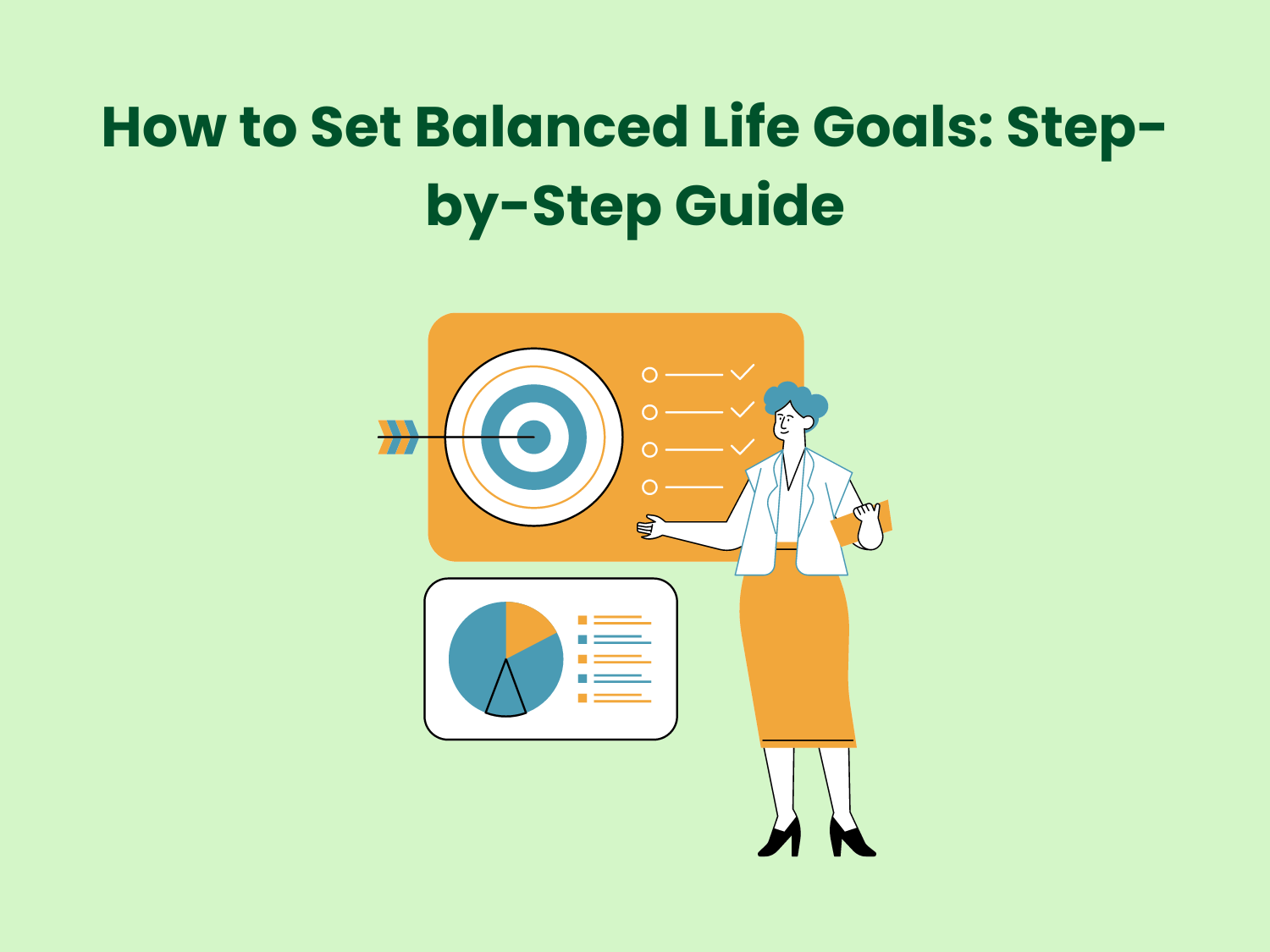It’s easy to obsess over a single sphere of life, like career goals, at the expense of health, relationships, finances, and rest. This leads to imbalance and eventual burnout.
The key is intentionally setting goals across all life areas to maintain equilibrium and prevent neglecting critical parts of your life. This guide will walk you through creating goals for health, work, money, relationships, personal growth, and leisure.
Achieving a balanced life goal requires diligence, but the peace and fulfilment arising from dedicating time to what matters most are worth it.
Follow these steps to create harmony and thrive.
#1. Define Your Core Values First
Before setting goals, clarify your values – what matters most to you in life? Family, growth, adventure, knowledge? Define your core values.
Rank values by importance. Does health outweigh wealth? Relationships over fame? Knowing your values allows aligning goals accordingly so you can work toward what’s essential.
#2. Set 3-5 Goals Per Area
For each key area of life, set 3-5 specific goals to pursue over the next 1-3 years.
For example:
Career: Get promoted, launch a side business, gain XYZ skill
Financial: Pay off a credit card, save for a vacation, max 401k
Physical: Run 5k, lose 20 lbs, gain muscle
Relationships: Schedule regular date nights, visit family monthly, deepen friendships
Learning: Read 12 books, take coding class, learn Spanish
Fun: Travel to Hawaii, play tennis, volunteer
Aim for balance across sectors. Don’t ignore any category. Balance requires broad effort.
#3. Use the SMART Framework
When setting each goal within a life area, use the SMART framework:
– Specific
– Measurable
– Achievable
– Relevant
– Time-bound
Having concrete goals with metrics, deadlines, and action plans prevents vagueness and motivates progress.
For example, a smart fitness goal could be to lose 15 lbs by Thanksgiving by walking 30 mins daily and tracking calories. Get specific!
#4. Schedule Goals on Your Calendar
After defining goals, block time on your calendar to work toward them consistently. Scheduling creates accountability.
For example, allocate time slots for date nights, family visits, skill training, hobby time, and exercise. Treat scheduled goal time as non-negotiable.
#5. Share Goals to Increase Commitment
Tell close friends and family about your goals. Their encouragement, reminders, and accountability help you persist when motivation lags.
If comfortable, share goals publicly on social media for added peer accountability. Vocalize and visualize goals to cement commitment.
#6. Review and Adjust Quarterly
Set time every 3 months to review all goals and adjust based on changing priorities or circumstances. Some questions to ask:
– Which goals align closely with my core values? Which feel misaligned?
– What progress have I made in each area?
– Do I need to rebalance where I spend time based on results?
Consistent quarterly reviews ensure a balanced goal spread as life evolves. Stay nimble.
#7. Automate Where Possible
Can any daily goal habits be automated? Smart home devices, financial tools, and phone apps can assist.
For example, schedule automatic savings transfers, use Fitbit to track activity, or set phone reminders to call family regularly.
Automation helps ingrain balanced goal habits.
#8. Reward Yourself at Milestones
Attach rewards like a massage, hiking trip, fancy dinner, or another treat to milestone achievements along the way.
Celebrating progress is key to staying motivated long-term. Balance hard work with deserved fun.
#9. Tackle Imbalances Proactively
At reviews, if you spot lopsided effort toward one or two goals, course correct. Temporarily pause goals in well-developed areas to focus on neglected goals. Rebalance priorities.
For example, if you realize fitness goals are eclipsing family time, dedicate the next month fully to family goals until equilibrium is restored. Get ahead of imbalances.
#10. Reflect on Tradeoffs Mindfully
Balancing goals sometimes requires tough tradeoffs on how you spend limited time. Reflect thoughtfully on tradeoffs using your values to guide decisions.
Is it worth missing a friend’s party to stay late at the office? Should you skip dinner out to save money? Make intentional choices.
FAQ About Balanced Life Goals
Q. What if work goals feel non-negotiable given my job demands?
A. Get creative scheduling personal goals around work by waking up earlier, utilizing lunch breaks, or clustering activities into evenings and weekends if more time off is impossible. Find pockets of time.
Q. What if I achieve goals in one area faster than others?
A. Awesome! Celebrate your wins, then re-evaluate priorities for the remaining time. Accelerating goals in some spheres allows shifting more energy elsewhere to round things out. Rebalance as needed.
Q. Is it okay to have just 1-2 big goals vs. many small ones?
A. Sure, if those align deeply with your values! Just be sure to incorporate some smaller goals in other areas, too, for needed balance across your whole life.
Q. How will I know when my life feels truly balanced?
A. You’ll feel relaxed yet energized. Excited but not overwhelmed. Hard work satisfies you without burning you out. You make steady progress on goals without feeling deprived in other areas. Listen to your mind, body and spirit.
Conclusion
Living a fulfilling life requires nurturing all aspects of it – work, relationships, health, leisure, and more. Build balance through intentional goal-setting across life spheres aligned with your actual values.
Consistency and tweaks over time allow you to thrive holistically. As your situation evolves, your balanced goals will, too. Keep taking small steps toward your ideal balanced life.
What’s one goal you could set this week to develop a currently neglected area of your life? Get started now!



